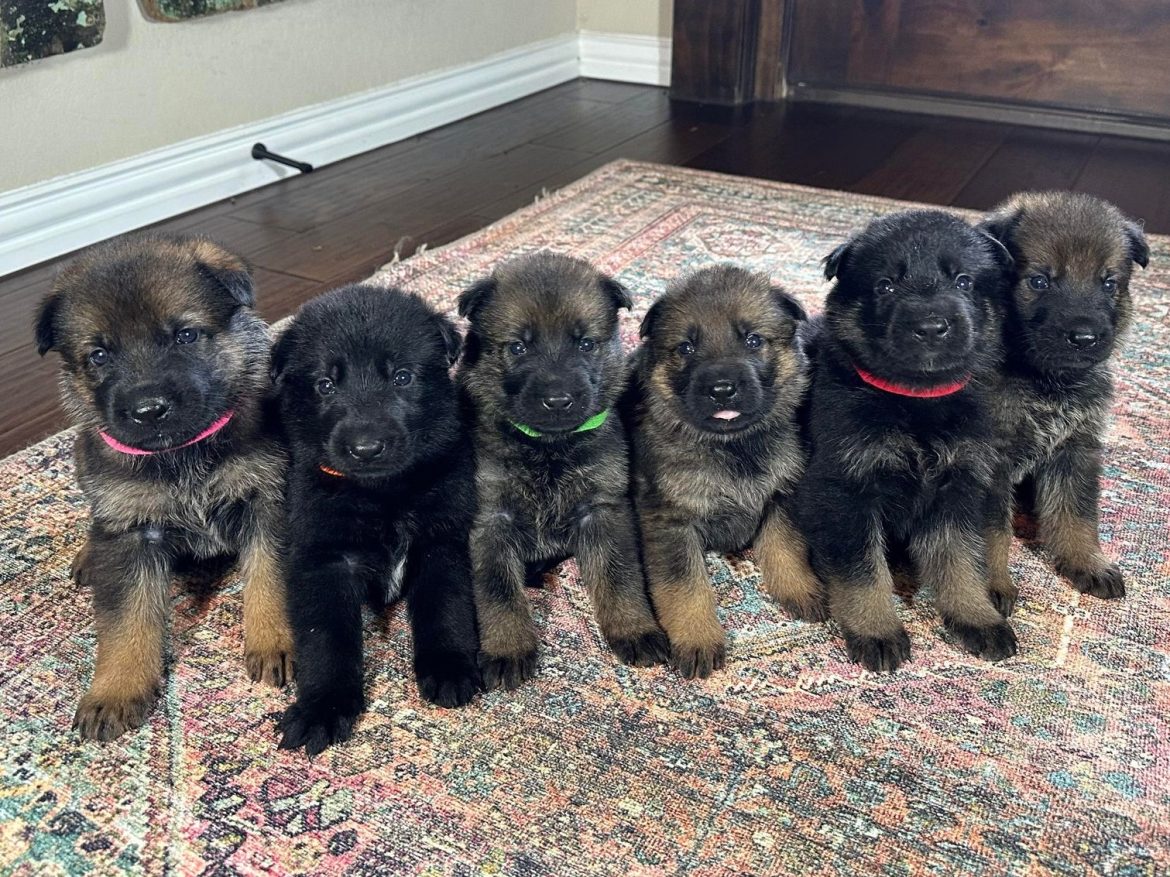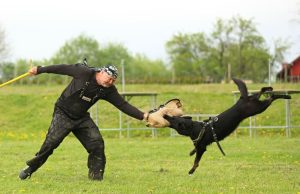Nine Steps to Teaching Your German Shepherd to Sit and Lay Down
Teaching your German Shepherd puppy basic commands like “sit” and “lay down” is not only essential for their training but also a great way to strengthen your bond and improve their behavior. Begin with potty training your German Shepherd puppy. Then move on to further obedience training. German Shepherds puppies are known for their intelligence and eagerness to learn, which makes them excellent students for these fundamental skills. Mastering these commands can greatly enhance your puppy’s ability to follow more complex instructions later on. Additionally, these training exercises serve as mental stimulation for your German Shepherd, helping to keep them engaged and happy. In this comprehensive guide, Czechworkingline.com will guide you through a 9-step process, elaborating on key techniques and considerations to teach your puppy these important commands effectively, setting the stage for further advanced training.
Choosing the Right Environment
Begin by selecting a quiet, distraction-free area to conduct your training sessions. A familiar environment, such as a living room or a secluded part of your yard, is ideal. This setting will help your puppy concentrate solely on you and the task at hand, reducing confusion and enhancing learning efficacy. A consistent training location also helps reinforce the routine, making it clearer to your puppy when it’s time to focus on learning. Avoid areas where other pets, people, or loud noises could divert your puppy’s attention. By keeping the training space consistent, German Shepherd puppies will begin to associate that specific area with mindfulness and training, setting a clear psychological indicator that it’s time to learn and listen.
Use the Right Treats
Having the right treats is crucial for effective training. Choose small, tasty treats that your German Shepherd finds irresistible. The treats should be soft and easy to eat quickly so that training sessions are smooth and continuous. Reserve these treats for training sessions only to maintain their special status. It’s essential that these treats are not part of their regular diet; their exclusivity keeps them highly desirable, which is a great motivator during training. Experiment with different types to see which ones your puppy responds to best, and rotate them to maintain interest. High-value treats can significantly enhance the learning experience, as they act as a powerful incentive for your puppy to perform well.
Introduce the ‘Sit’ Command
Start with the “sit” command, as it’s typically easier and naturally follows from many puppies’ behaviors when they stop moving. Hold a treat close to your puppy’s nose to get their attention. Slowly move the treat upwards, allowing their head to follow the treat, causing their bottom to lower. Once their hindquarters touch the ground, immediately say “sit,” then give them the treat and plenty of praise. Repeat this several times per training session. This method is based on a training principle called luring. By maneuvering the treat to guide your puppy’s posture, you’re not only instructing but also physically guiding them into understanding what the command entails. This clarity helps minimize confusion and speeds up the learning process. Be sure to maintain a joyful tone throughout the training to make the session enjoyable and stress-free.
Reinforce the ‘Sit’ Command
Consistency is key in reinforcing commands. Practice the “sit” command multiple times throughout the day. Use everyday situations, like before meals or during walks, to practice. This repetition will help your puppy understand that “sit” is not just a command for training sessions but a part of everyday life. Applying the command in various contexts helps solidify the pup’s understanding and obedience to the command across different situations and environments. By integrating the command into daily routines, it becomes second nature to your puppy. This not only aids in reinforcing what they learn but also ensures that they recognize and respond to the command instinctively in any setting.
Use Hand Signals
Combine verbal commands with a hand signal to reinforce the message. For “sit,” you can use an upward motion with your hand, palm facing up. Over time, this gesture will help your puppy respond to the command even if they can’t hear you, providing useful flexibility in various situations. Visual cues are particularly helpful in noisy environments where your voice might not be heard, or when long-distance commands are required, such as in parks or large training fields. Hand signals are a universal language in dog training and can dramatically enhance communication between you and your puppy. Ensure your movements are distinct and consistent each time to avoid confusing your German Shepherd, and pair each gesture with the verbal command until the actions are inherently linked.
Transition to the ‘Lay Down’ Command
Once your German Shepherd puppies comfortable with “sit,” you can introduce “lay down.” Start by asking your puppy to sit. Then, hold a treat by their nose and slowly lower it to the ground between their front legs. As their focus follows the treat, their body should naturally follow into a lying position. Once completely down, say “lay down” clearly, give them the treat, and praise them. This sequence builds directly on the skills learned from the “sit” command, utilizing the trust and understanding that have developed during previous training. It’s important to proceed slowly and patiently with this step, as going from sitting to lying down can be a more submissive and vulnerable position for some puppies. By using a gentle tone and offering generous praise, you reinforce that following commands is a safe and rewarding practice.
Practice Makes Perfect
Like the “sit” command, “lay down” should be practiced repeatedly in short, positive sessions throughout the day. Consistent practice helps reinforce learning and turns these behaviors into habits. Be patient and maintain a positive atmosphere during training sessions. Schedule multiple five to ten-minute sessions throughout the day to keep your puppy engaged without overwhelming them. Frequent, enjoyable practices not only improve the puppy’s performance but also deepen the communication and understanding between you two. As you practice, gradually increase the duration you ask your puppy to stay in the “down” position before rewarding them, which helps build their patience and discipline.
Gradually Increase Distractions
As your German Shepherd puppies become more proficient at both commands, gradually introduce more distractions into the training environment. This could mean practicing the commands outdoors, in a park, or while there are other people around. This step is crucial for ensuring your puppy can obey commands outside of the controlled training environment. Begin with minimal distractions, and gradually increase the level of difficulty as your puppy grows more competent. This training step is invaluable, as it tests and strengthens the puppy’s ability to focus and comply amidst potential distractions. Effective training under distractions solidifies commands as reliable behaviors, essential for real-world situations where you need absolute control and response.
Phase Out Treats Gradually
Once your puppy consistently responds to both commands, begin to reduce the frequency of treats. Start by substituting verbal praise and petting for some of the treats. Gradually move to a variable reward schedule where treats are given intermittently along with lots of praise. This will prevent them from expecting a treat every time and will strengthen their obedience. The eventual goal is for your puppy to comply with your commands reliably without needing tangible rewards every time. This method of phasing out the constant rewards teaches them to obey for the sake of good behavior and your approval, rather than for a treat, leading to a more profound understanding and respect for your commands.
Conclusion
Teaching your German Shepherd to sit and lay down requires patience, consistency, and a positive approach. By following these steps, you create a solid foundation for further training and a disciplined yet loving relationship with your puppy. Each successfully acquired command builds their confidence and ability to learn more complex tasks in the future. Remember, the goal of training is not only to teach obedience but also to foster a lifelong mutual respect and understanding between you and your beloved pet. This journey of training extends beyond mere command obedience to creating a harmonious, respectful, and intuitive relationship where your German Shepherd respects and responds to your guidance with trust and attentiveness.




